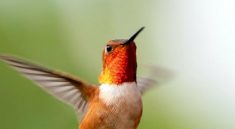Planting a vegetable garden is so easy but is also the hardest part of planting. It is a lot easier than many people think because it can be accomplished by anyone. That being said, there are a few tips that must be kept in mind before planting your vegetable garden.
You want to use a sloped and flat yard when planting your garden because the ground will be a little warmer and drier on sloped ground. You also want to plant your seeds at least six inches apart to allow for air to get to the seeds. Planting your seeds six inches apart keeps the soil moist and encourages the growth of your vegetables.
The first year after planting you do not want to water the ground. If you do need to water the first year to make sure you water in the early morning or late afternoon hours. Make sure you have one inch of moisture in the area you are planting. If the ground is wet in the morning, you are better off covering the area that was planted.
Your vegetables will have some weed seeds in them from your neighbor’s lawn and you do not want those weeds getting in the way of your new vegetable garden. The best way to keep the weeds from sprouting up is to mow the lawn a couple of times a week. You can also rake and pull the weeds when they first start to germinate. You will be surprised at how many weeds you can get rid of before they start to grow.
Space your vegetables out a little bit to avoid them being in the same spot for very long. If you choose to use plastic mulch around your vegetables, this will help to keep the weeds from growing as long. Mulching also helps to reduce evaporation. You want to keep the moisture and soil moisture low in your vegetable garden. During the hot summer months, you should let the soil cool for an hour or two before watering your garden.
Try to get your vegetable garden at least a foot away from trees and bushes. Any obstacles that can get in the way of your plants will eventually cause problems. A fence or trellis is one way to avoid any weeds. You can also plant in containers to keep weeds from getting in. Use chemical weed killers to help with the problem if needed.
You don’t need to have a separate bed for each type of vegetable. Vegetables that do well in a container can be planted anywhere without having to move them. The best time to plant these kinds of vegetables is about six weeks before you plan to harvest them. When you want to plant new seedlings or vegetable seedlings try to do it in the evening so the sun has the maximum amount of time to reach the soil.
Try to avoid planting in wet areas during the planting season. It is best to wait until after the last frost in early spring. Keep in mind, too much rain will only give your vegetables bad roots so watering them regularly is important.
Mixing the fertilizer that you use with good soil is crucial to a healthy garden. Too much fertilizer can cause the soil to become extremely acidic and the nutrients to run out. This means you have to mix your fertilizer with your garden soil and this will keep your garden plants healthy and happy.
One of the best planting tips for beginners is to make sure the soil is warm enough for the plants to root properly. If you wait until the last minute for planting you could end up with soggy seeds. It is also best to get a very accurate method for measuring your soil. A soil testing kit is ideal for this and is the best way to measure the exact amount of fertilizer needed.
You can learn a lot about your vegetable garden by watching the plants in the ground. Many gardening clubs have a garden plot where people can learn a lot about their plants. Having a gardening club can be very rewarding, you just never know what you may learn.




